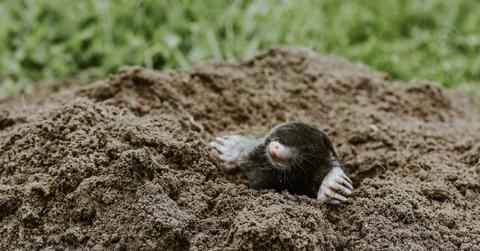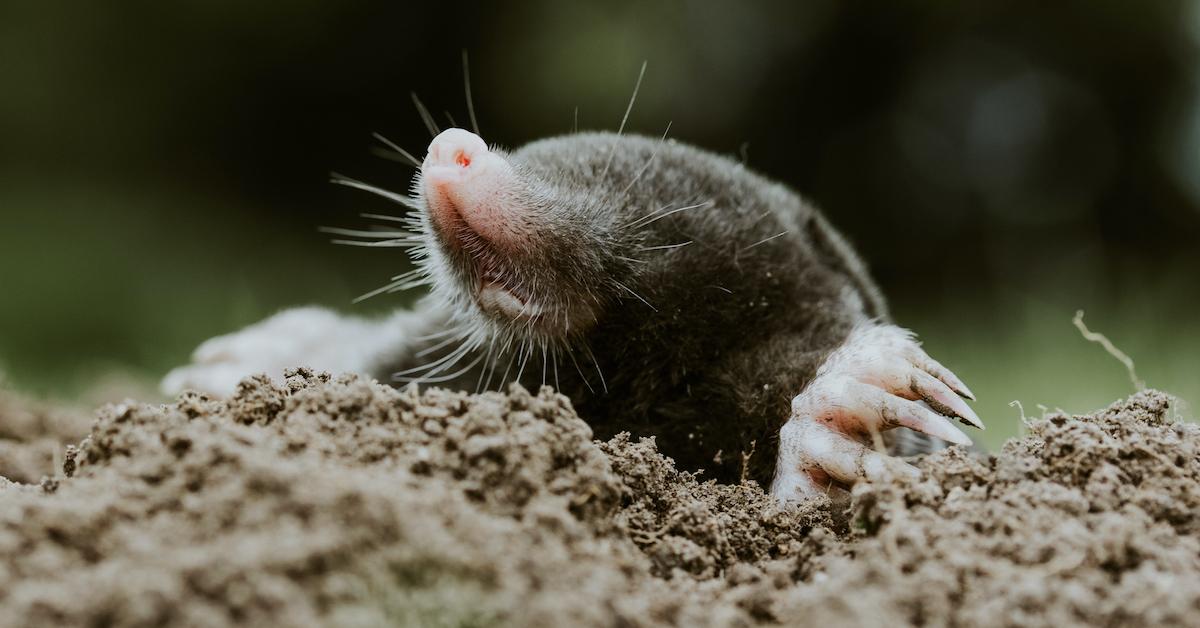Moles in the Yard: How to Get Rid of Them Without Killing Them
Published June 25 2021, 10:39 a.m. ET

Moles are something of an unseen pest in American yards. It isn’t that the animals themselves are rare — indeed, there are seven different species of mole found throughout North America. Yet, even when they are causing damage to our lawns and gardens, they are rarely identified by sight. Most of the time, the only way to determine you have a mole problem is to investigate their mounds and tunnels. Once you know you’ve got them, however, how do you get rid of moles in your yard?
The difference between moles and gophers:
Moles and gophers are both burrowing animals that can wreak havoc if they happen to make their home beneath your lawn, vegetable patch, or flower garden. But how does one know if they are dealing with one or the other, especially when it’s rare to spot either of them whilst they are digging about one’s backyard?
Gophers are herbivorous rodents with four large incisors. They are larger than mice but smaller than rats and feed on plant roots. Moles are sleek, dark-colored insectivores with huge foreclaws, long snouts, and concealed eyes and ear holes. According to Home Depot, both creatures burrow deep and wide enough to damage root systems, plant bulbs, garden vegetables, and water or electric lines.
Besides the obvious difference in appearance, moles come from a different evolutionary line than their gopher cousins in Rodentia. They also have different behaviors. Moles are solitary, choosing to dwell almost entirely in their self-dug network of underground, which can usually be found about a foot deep into the soil. They only ever come to the surface to find a mate.
What do mole holes look like?
According to Home Depot, moles leave open, volcano-shaped mounts with raised ridges of dirt in their wake, while gopher holes tend to leave crescent-shaped mounds that they plug as they leave or enter their burrows.

How to get rid of moles in your yard:
The methods listed below represent the most humane ways to prevent and/or remove moles from your yard without resorting to pesticides or chemical repellents.
Fewer food sources
Moles are unabashed insectivores, and according to Smith Pest Management, one of their favorite foods are the grub worms that live in and around plant roots. Controlling or eliminating your grub population will force the moles to leave in search of grubbier yards. You can do this by using beneficial nematodes or something known as milky spore, a soil-dwelling bacteria otherwise known as Paenibacillus popilliae. Both are available at hardware stores like Lowe’s or Home Depot.
Dry soil
According to Better Homes and Gardens, moles prefer digging through damp soil because it’s softer and easier to burrow. Overwatering your lawn is a good way to waste more water and create the perfect mole-friendly environment. If this isn’t possible, you could also try improving your soil drainage to keep it from getting too damp. Note that most grass only needs about 1 inch of water a week to thrive, so you shouldn’t need much more than that. Using this method will also help you conserve more water around your home.
Plant and scent barriers
Because they spend most of their lives underground, moles do not rely on their eyesight very much. Instead, they use their acute sense of smell to get around and find food. And like most animals that rely on their sense of smell, moles are easily repulsed and confused by particularly strong smells. Try planting daffodils, marigolds, citronella, or lavender flowers wherever you’ve seen moles to create a natural barrier.
According to Smiths Pest Management, you could also plant these plants around the edge of the garden to prevent moles from entering the area in the first place. They also recommend purchasing ready-made mole barriers, which can be found at most garden stores.
Mole repellent spray
When all else fails, there are plenty of ready-made mole repellents available on the market. Some of these are sprays or granules, some use chemicals or pesticidal compounds, but there are a few non-lethal options out there. Tomcat actually makes a ready-to-spray repellent that uses castor oil, a foul-tasting liquid, as its main ingredient.